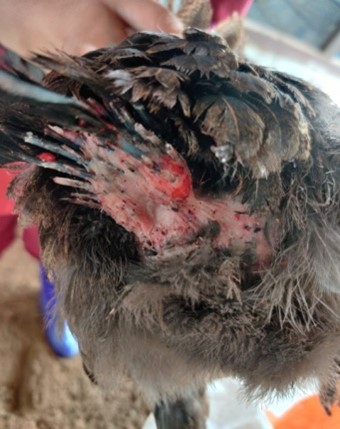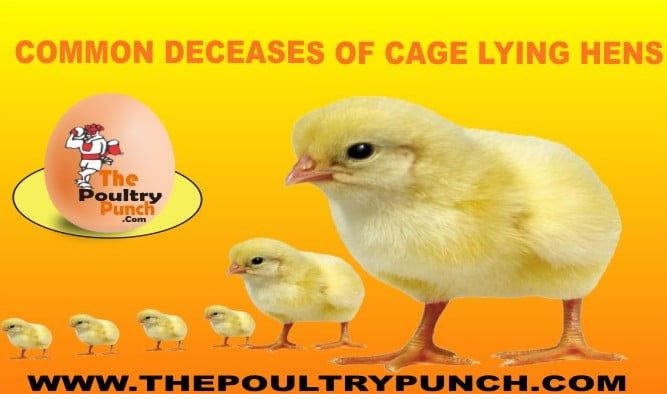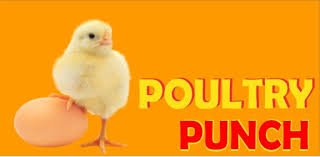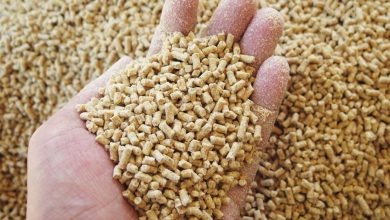Cannibalism in Poultry
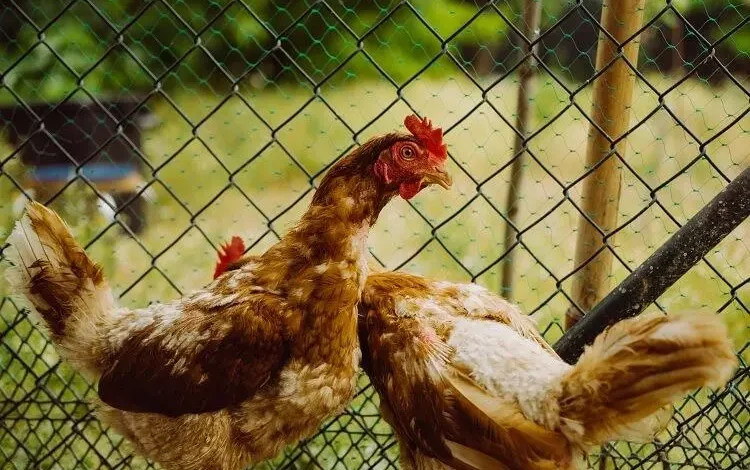
Cannibalism in Poultry: Prevention and control measures
INTRODUCTION:
Cannibalism in poultry is the act of one individual of a poultry species consuming all or part of another individual of the same species as food.
Cannibalism Poultry usually occurs when the birds are stressed by a poor management practice. Once becoming stressed, one bird begins picking the feathers, comb, toes or vent of another bird. Once an open wound or blood is visible on the bird, the vicious habit of cannibalism can spread rapidly through the entire flock.
TYPES OF PECKING IN POULTRY
- Vent pecking
Vent pecking is due to mites/lices, pecking out(prolapsed of vent region) or during self grooming.
- Tail pecking
It is due to overcrowding and competition for space( Feeder/water space).
- Egg pecking
Egg pecking is a sign of nutritional imbalance( Eg. Calcium deficiency).
- Saddle pecking
Saddle pecking is due to lack of protein in diet, methionine deficiency, early signs of molting and rooster self inflicted pecking on the saddle area.
- Back of the head (pecking)
Pecking of the back head is due to light intensity (40% light transmission with green cover must be seen to it), overcrowding and methionine deficiency.
CAUSES OF CANNIBALISM IN POULTRY
- EXCESSIVE LIGHT
Extremely bright light or excessively long periods of light will cause birds to become hostile toward one another. Never use white light bulbs larger than 40 watts to brood fowl. If larger bulbs are required for heat, use red or infra-red bulbs. When raising birds 12 weeks of age or older, use 15 or 25 watt bulbs above feeding and watering areas. Never light fowl more than 16 hours per day. Constant light can be stressful to the birds.
- ABSENCE OF FEED OR WATER OR A SHORTAGE OF FEEDER AND WATERER SPACE
If the birds have to fight for food and water, or if the birds are always hungry they will increase pecking. Be sure that birds have free access to water and feed at all times. The pecking order determines which birds get to eat and when. When you have inadequate feeder space birds at the lower end of the pecking order may never be allowed to eat.
- EXCESSIVE HEAT
When the birds become uncomfortably hot they can become extremely cannibalistic. Be sure to adjust the brooding temperature as the young fowl get older. Brood young fowl at 95°F. for the first week and then decrease the temperature 5°F. per week, until you reach 70°F. or the outside temperature. The temperature should be measured at the height of the birds back directly under the heat source. Do not heat the entire brooding facility to the recommended temperature. Not decreasing the brooding temperature is a common mistake that leads to problems like cannibalism.
- UNBALANCED DIETS
Extremely high energy and low fiber diets cause the birds to be extra active and aggressive. Feed lacking protein and other nutrients, particularly Methionine, will also cause birds to pick feathers. Make sure you feed a diet balanced appropriately for the age and types of fowl you are raising.
- OVERCROWDING
Large breeds of chickens should be allowed:
- 1/4 sq. ft./bird for first 2 weeks
- 3/4 sq. ft./bird for 3-8 weeks
- 1.5 sq. ft./bird from 8 to 16 weeks of age
- 2 sq. ft./bird from 16 weeks on
- MIXING OF DIFFERENT TYPES, SIZES, AND COLORS OF FOWL
Mixing different ages and sizes of fowl or fowl with different traits promote pecking by disrupting the flock’s normal pecking order. Never brood different species of fowl together in the same pen. Don’t brood feathered leg fowl, crested fowl or bearded fowl with fowl without these traits. Curiosity can also start pecking. Toe pecking in the first few weeks is often started due to curiosity of the different colors or traits.
- ABRUPT CHANGES IN ENVIRONMENT OR MANAGEMENT PRACTICES
If you plan to move young birds to a new location, it is best to move some of their feeders and waterers with them in order to help them adapt. When you change over to larger feeders and waterers it is helpful to leave the smaller equipment in the pen for a few days to help during the change.
- ALLOWING CRIPPLES, INJURED OR DEAD BIRDS TO REMAIN IN A FLOCK
Fowl will pick on crippled or dead birds in their pens because of the social order and curiosity. Once pecking starts it can quickly develop into a vicious habit.
- SLOW FEATHERING BIRDS ARE MOST PRONE TO CANNIBALISM
Take extra precautions with slow feathering birds. Most cannibalism occurs during father growth in young fowl. Birds with slow feathering have immature tender feathers exposed for longer periods of time leaving them open to damage from pecking. Don’t raise slow feathering birds with other fowl.
- BRIGHTLY LIT NESTS OR SHORTAGE OF NESTING BOXES
Don’t place bright lights near the nesting areas. Also, allow 1 nest for every 5 hens . Vent pecking by layers is also a common problem.
- INTRODUCING NEW BIRDS TO THE FLOCK
Anytime you add or remove birds from a flock you disrupt the pecking order of the flock. It is best to introduce any new birds into your pen by splitting the pen with a wire wall for at least a week to help the birds to get to know each other. Also, adding the birds to the perch at night can help. Always supervise new introductions to the flock and intervene if the pecking gets out of control and birds are getting hurt. It may take a week or more for flock to re-establish the new pecking order.
- DEWORM THE BIRDS
Deworming should be done regularly to medicate your birds against parasites, since parasitized birds usually resort to cannibalism. Both external and internal parasites can stimulate chickens to peck and hurt their skin, resulting in a frenzy of cannibalism.
- PROLAPSE PECKING
Prolapse can occur in very young or fat laying flocks. Prolapse is when the uterus stretches and tears and takes longer to properly return into the body cavity after the egg is laid. This is most common in young flocks that start laying too soon (prior to 20 weeks of age or in fat layers). When the uterus is exposed for a period of time other birds will see it and pick at it out of curiosity. Once they pick at the uterus it bleeds and the picking quick progresses to cannibalism. If you start seeing blood streaks on the shell surface your flock may be prone to prolapse. Properly managing how you bring your birds into production and proper feeding practices can prevent this problem. Fat birds will need to be put on a low energy diet.
- HERIARCHIAL ORDER
On disturbance of the pecking order in a flock ,is another factor for rise of cannibalism in poultry.
CONTROL AND PREVENTIVE MEASURES
Allowing the birds to use up their energy in an enclosed outside run is great way to avoid cannibalism. This will keep the birds not only busy but allow them to peck greens, ground and insects instead of other birds.
- Give the birds a large handful of fresh greens like clover grass or weeds, each day. This increases the fiber in the birds’ diet. A high fiber diet will keep the birds’ gizzard full and keeps the birds more content. Small parts of baled green leafy hay will also give the birds something to pick at.
- Salt solution –A deficiency of sulfur and salt in the feeds of birds could trigger the pecking habit in a flock by increasing the birds’ appetite for blood (blood contains salt and sulfur). To prevent this addition of one tablespoon of salt to 1 litre of water and the solution can be given as the only drink for half a day. It can then be replaced with regular drinking water. If this does not check the cannibalism within a day or two, it should be repeated after a period of three days.
If the trouble is due to a lack of salt, it will correct the situation.
- Use of mechanical devices like plastic peepers or blinders in aggressive birds like gamebirds is advisable.
- Placing colored or shiny items for the birds to pick at and occupy their time can draw attention away from other birds. Hanging shine cans just above eye level can serve as a toy.
- Beak trimming can also used in problem flocks (at 1 day of age and repeated between 6 and 12 weeks of age). Trim the beak by removing about 1/3 of the tip of the beak providing a square tip. This makes it difficult for the birds to harm each other. However, beak trimming should be done by someone experienced in proper trimming.
6. Selective breeding and genetics- A sibling-selection programme has genetically selected a low mortality line which shows decreased mortality from cannibalism compared to a control line.
- Perches -Rearing chicks with access to perches by four weeks of age has been associated with increased use of perches, and reduced cannibalism, in adulthood.
TREATMENT FOR CANNIBALISM OR CANNIBALISM OUTBREAK
Since cannibalism can be caused by several conditions, we may not be able to determine the exact cause of the problem. However, stress no matter how slight, is usually the main factor.
- Correct of any practices which may have lead to cannibalism.
- Darkening the facilities by using red bulbs.
- Remove any badly injured birds.
- Applying an “anti-peck” ointment/ spray on any damaged birds usually stops pecking.(Anti-peck ointment or spay acts by acting as a deterrent with a strong odour and foul taste to help discourage pecking among the flock)
- Lowering of the pen temperature.
CONCLUSION
Cannibalism is a brutal behavior that needs to be looked upon with utmost care as it can lead to death of the birds cum economical loss to the rearer. The rearer of poultry farm should be vigilant and detect any abnormal behaviors seen in the flock. With that being said, one can subdue cannibalism with the right preventive and control measures in a poultry farm.
REFERENCES:
- https://extension.psu.edu/poultry-cannibalism-prevention-and-treatment
- “FEATHER PECKING AND CANNIBALISM IN SMALL AND BACKYARD POULTRY FLOCKS – Small and backyard poultry”. poultry.extension.org.
- Savory, J., (2010). Nutrition, feeding and drinking behaviour, and welfare. In The Welfare of Domestic Fowl and Other Captive Birds, Duncan, H.J.I., and P, Hawkins (Eds)., Springer. pp. 165-188.
- Gold, A., (July 18, 1986). “Blinders Make A Spectacle For Chicken-hearted Collectors”. Chicago Tribune.
Crespo, R., DVM, MSc, DVSc, DACPV, Department of Population Health and Pathobiology, College of Veterinary Medicine, North Carolina State University.
